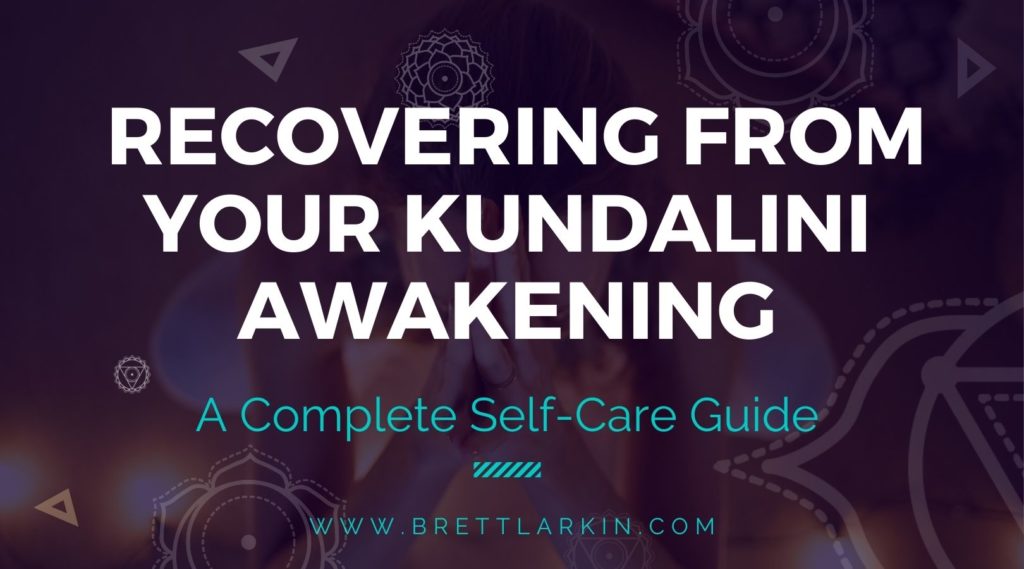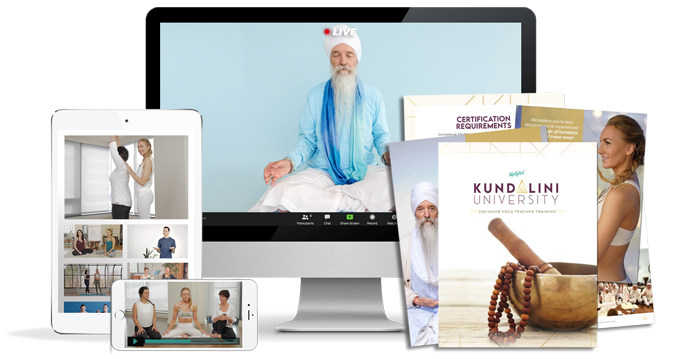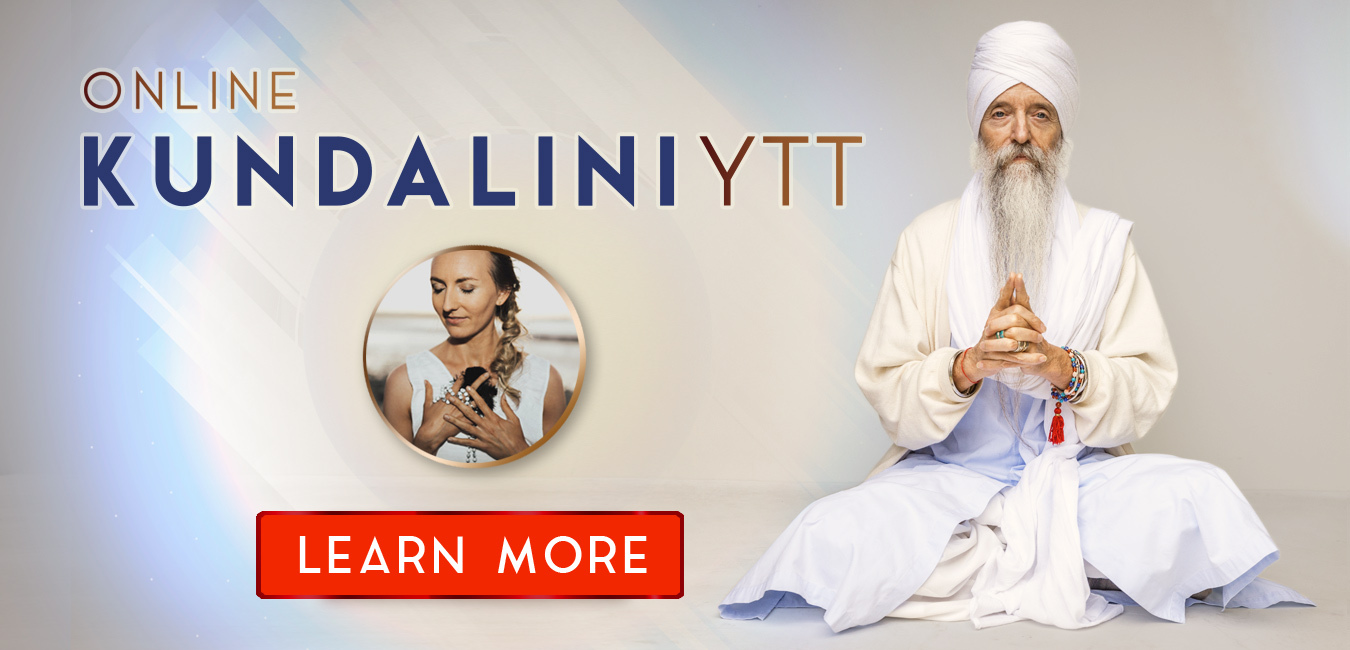
We might love the idea of enlightenment, but spiritual awakening isn’t a walk in the park for everybody. The very mythology around enlightenment suggests it should be… pleasant, right? Buddha experienced spiritual enlightenment after meditating under a tree in a beautiful paradise for 40 days, after all.
I decided to co-author this article with my close friend Taylor after he shared a debilitating kundalini awakening experience which left him unable to function in daily life or do his job for over six months.
Together, we created this guide on how to resolve kundalini awakening. You can help yourself or a loved one through a traumatic spiritual awakening and understand what’s going on.
What is Kundalini Energy?
Kundalini is our spiritual energy, charged with the feminine life force of creation. It’s represented as a coiled serpent at the base of the spine. In many people, it lies dormant, but you can awaken the kundalini serpent by. When you awaken kundalini energy, it rises up the central energy channel and penetrates the seventh chakra, forming a union with the masculine force of higher consciousness. I teach more about Kundalini energy in my virtual 20-hour course Kundalini Demystified – come check it out!
What is Kundalini Awakening?
Kundalini awakening is the divine union of your Kundalini energy rising to meet the energetic field of the universe.
The Release of Stored Trauma
This union initiates a massive energetic discharge as pure awareness dissolves the framework of reality we accepted until that moment. In this moment of awakening, the subtle body experiences a surge of pure energy that removes all blockages in the chakra system that may have been present for longer than you can remember.
In the moment though, it feel intense and completely uncontrollable. Some common experiences of Kundalini awakening overlap significantly with the experience of releasing stored trauma. They include:
- Uncontrollable shaking
- Sudden memory recall
- Visions and alterations in sight
- Fever
- Chills
- Headaches
- Sweating
- Crying
- Overwhelming emotion
- Tingling sensations
Breaking Through vs Breaking Down
Breaking through and breaking down both involve surrendering control of what you know, who you are, and what you want. So how can you tell the difference between a breakthrough Kundalini awakening and a breakdown scenario?
First and foremost – I’m proud to preach that it’s always a good idea to reach out to your network of care providers if you’ve experienced a serious shift in your ability to function or have a history of mental illness. Psychotic episodes, panic attacks and acute stress responses need immediate attention by skilled providers and should absolutely not be confused with an enlightening experience.
That being said, there is a wide spectrum of how humans experience and interpret the divine. I’m not interested in affirming or cancelling the experiences of anyone who believes they have had a spiritual experience, but rather focusing on the difference between a breakthrough and a breakdown according to the Kundalini tradition.
A Kundalini awakening can be a sudden experience or one that takes place over time. When the release is sudden, it’s a bit like what happens in an earthquake. Things shift abruptly and might even topple structures, but the chaos is temporary. This breakthrough moment signals movement toward equilibrium and unity with universal forces. A breakdown often resists or blocks connection with those universal forces.
The Freeze Response Stores Trauma In The Body
Bodies are sooo intelligent. Our bodies are programmed with responses to literally everything! These automatic responses generally benefit us, but sometimes they create patterns in the neuro-physical being that aren’t helpful so in the long run. In psycho-physiology, our reaction to threat is famously known as the fight, flight or freeze response. We fight when think we can overcome the threat and we flee when we think we can outrun it. But the third stress response – freeze – is triggered when the threat is so great that our brains calculate that neither fighting nor fleeing is an option.
The freeze response triggers variations of immobilization that have been linked to PTSD following the experience trauma, from shut-down type scenarios where the heart rate drops and the mind dissociates from the body, to a kind of super-charged stillness, where the heart rate rises and vision sharpens in preparation for escape. Everyone experiences the freeze response differently, but it’s important to note that this is ultimately the last resort in the stress response hierarchy. We are wired to physically react to threats.
Threat? Fight! Danger? Run! The truth is, our social conditioning and cultural norms can lead us to consciously stifle these physical responses in favor of freezing up and waiting for the threat to pass. When we do this though, we store the energy that would have been used to face the threat in the form of trauma.
This is the essence of a spontaneous and uncontrolled Kundalini awakening. During an intense experience of awakening, the extent of the fear that arises during the moment of reckoning with past trauma is so completely overwhelming that it may trigger the freeze response. This is especially true if you or your loved one has experienced trauma in the past and lacks the the nervous system resources, emotional safety, and grounding to accept the rapid shift in consciousness that Kundalini awakening initiates.
After the initial awakening, you may bounce between facing the overwhelming fear, drowning in it, and re-experiencing a freeze response that triggers apathy, a loss of will to live, depression, and anxiety. In this cycle, you may lose the capacity to support yourself and make the necessary changes to regain connection to vitality. This risk increases if you may not even know what’s going on, perhaps stuck in the belief that Kundalini awakening couldn’t possibly be so debilitating.
Take my quiz to learn if YOUR kundalini energy is awakened 👇
Getting Stuck / Unstuck
Immobilization is the essence of trauma. When the freeze response overrides fight or flight, your energetic awareness gets trapped within the body as your nervous system alters the flow of information coming from the environment. If you survive the traumatic event, the body stores this response pattern and is more likely to freeze again in a threatening situation. It helped you survive, right? The problem with the freeze response is that it often leads to feelings of helplessness, paranoia, difficulty managing fear and emotions, and a general lack of agency.
Those who experience the freeze response as children are more likely to respond to future stressors in the same way, and this can cause a great deal of pain and suffering down the road. We can get stuck re-living the same stress response over and over, even unconsciously seeking out similar traumatic circumstances in order to resolve the situation in the way we wished we had the first time around.
So how do you get unstuck? Breaking free from these painful patterns can be so difficult that we’re afraid to even try. The key here is to understand the source of the trauma that continues to negatively affect your life. When investigating, be loving with yourself. Practice ahimsa. It’s essential to embrace your suffering, because shame and embarrassment will typically prevent you from getting the support you need. Gently ask yourself why:
Why couldn’t you physically respond to the threat?
It could be that:
- You were overwhelmed by fear in the moment
- You experienced conflicting messages from trusted people present during the trauma
- You were deeply relaxed and unprepared for a threat to present itself
- You were physically restrained
To heal the trauma, we need to let ourselves process the information imparted in the original experience of the traumatic event, allowing the body to move, the voice to be heard, and the pain to be released. One hurdle you need to watch out for as you heal is re-traumatization. You can inadverdently re-traumatize yourself by re-visiting the memory of the original trauma in an emotionally unsafe environment. Even watching others suffer from similar experiences in movies can trigger another cycle of stress response. In either situation, suppressing the reaction will often trigger another freeze state, and we get stuck in the cycle again.
What Physically Happens During Spontaneous Kundalini Awakening
Kundalini awakening represents the moment of reckoning with past trauma. When Kundalini energy surges through the nadis and chakras, it frees energy that has been held as suppressed emotion, physical tension and psychological suffering in the form of thought patterns, beliefs about who you are, and even the very structure of consciousness itself. When dormant Kundalini energy rises from the base of the spine through your chakras, it frees deeply held tension in your neuro-physical being. Call it muscle memory, trauma, or what have you – when the energy is released, you may experience a break from whatever you felt was reality before the awakening.
How To Resolve Kundalini Awakening: What To Do After Kundalini Awakening
If this all sounds terrifying, I’m here to tell you that there is hope. Recovering from a traumatic Kundalini awakening requires slowly and safely building your nervous system capacity. Focus on incremental scaffolding (aka baby steps!) to help you regulate your emotions and maintain steady energy. This is what to do if you’re experiencing lasting symptoms of a traumatic Kundalini awakening.
1. Practice Calming Pranayama
Breath is your gateway to life. Our body has a vast healing intelligence that we lose touch with when emotions rule our breath. With an overactive nervous system comes shallow, fast breath that can keep you on edge, even when you want to relax. After all, there are specific breath patterns for every emotion you experience. Pranayama is a powerful tool for acknowledging your current emotional state while moving toward a desired state; when recovering from a rough Kundalini awakening, aim for calming the nervous system with pranayama to ease anxiety. Focus on cooling, slow breaths, breath awareness practices, and retentions to integrate the five koshas – your physical energetic, mental, wisdom, and bliss layers – through the mindful experience of your vital energy.
Belly breathing is a an especially grounding and simple pranayama technique that comes in handy if you experience sudden rushes of overwhelm. Pay attention to your breath throughout the day, and notice when you start ‘losing your breath’. If you train yourself to breath deeply into the belly in peace time, you’ll build the capacity to engage the deep belly breathing when responding to stress.
To practice belly breathing, simply place your hands on your stomach, right below the naval. As you inhale, fill the lungs from the bottom to the top – this will cause your belly to expand. As you exhale, release breath from the chest first and then gently contract your stomach to press remaining air out. Repeat. Set aside time to do this a few times a day in different environments. You can either sit or lie down while practicing belly breathing – each posture has its own advantages:

- Lie Down: Set yourself up on a carpeted floor or rug with whatever you need to stay warm. Resting on the back allows you to feel full contact with the Earth and release the muscle tension required to stay upright. This is a great option if you struggle to sense the movement of your breath. As long as you’re on a firm surface (don’t do this in bed or on a super squishy couch), you’ll be able to feel your chest and belly rise and fall more easily than while sitting.

- Sit: Sitting on a pillow, the ground or in a chair generally keeps you more alert and may give you a greater sense of agency than lying down while you breathe. Sitting also initiates a stronger connection to the vagus nerve (soul nerve) of the parasympathetic nervous system, deepening communication between your soul body and your mental bodies.
Remember that the breath is a tool for deeper presence in your being. It’s totally normal for emotion and intuitive movement to come up during pranayama practice. Let them! If an intense emotion arises, let any breathing technique go. Give yourself the chance to have a good cry or punch a pillow 💥 The point here is to encourage release, so follow technique, but not to the extent that it overrides your intuition. If you’re breathing and feel called to move, do that instead. Go for a run. Let the breath guide you to trust your intuition.
2. Co-regulate
It may sound like some expensive therapeutic technique, but humans -and mammals of all kinds, really! – do this all of the time without even thinking. In psychology, co-regulation is the effect of social relationships on our mode of being. Being in close proximity to people who make you feel safe can hugely benefit your ability to regulate the emotional ups and downs that come with a traumatic Kundalini awakening. You’ll need to give yourself a nudge to get social when you’re in a slump, so I suggest scheduling social appointments weeks ahead so you won’t let your downs make the decision to keep the meeting for you.
Scheduling in general will help you create a greater sense of stability, with meals at the same time every day (ideally with your loved and trusted ones), walks in mid-morning, work in specific hours, etc. We’re not aiming to check off to-dos here, only create external regulation mechanisms to get you grounded again. Let yourself be taken care of whenever possible 🥰
3. Immerse Yourself In Nature

Nothing reminds us of the where and then when quite like nature. Get out and walk, taking the leafiest and greenest route possible. Focus on mindful relaxation as you walk, noticing the colors of the leaves, the scent of the soil, and the firmness of the Earth under your feet. Call a friend, and be consistent. If you’re not the outdoorsy type and it’s a struggle to get out, reward yourself with something you already enjoy at the end, like a walk and coffee.
4. Practice Grounding Yoga Asana
Yoga asana gives the mind something concrete and achievable to focus on, freeing the body to do what it needs to do. Traditional hatha yoga postures were designed to work thoroughly through the physical limits, quietening the mind in the process of releasing tension systematically from muscle and connective tissues. Practicing yoga asana can help get you out of your thinking mind (shutting down your prefrontal cortex) and get you into an embodied state where you can feel, moan, release, and enjoy your body in a direct experience.
Kundalini yoga kriyas are especially suited to releasing stored trauma because they’re typically repetitive movements with strong hold and release breathing techniques. Try my beginner friendly kriya in the morning to get your day off to a good start:
Is the thought of just doing anything almost too much? No worries. If you’re in the midst of a really intense physical release, avoid Kundalini yoga. It heightens sensation and can overwhelm an already fatigued adrenal system.
It’s all about balance. If you’re overwhelmed, just lie on floor! Forget the yoga and forget the pranayama. Later in the day, though, you may feel stuck and ready to move energy – this is a great time to practice a kriya.
The bottom line advice here is to experiment, and trust your intuition. Practice things that work for you in the moment of NOW. Calibrate the practices to exactly where your energy level is at that point of day. Even if you love my YouTube channel or pre-recorded classes, you can’t outsource the decision for what you need.
5. Learn to Sit With It In Meditation
Once you’ve listened to your body, it’s always a good idea to sit with your mind. Meditation of all kinds will help you to build your nervous system capacity and train you to accept your personal weather system, whatever might be coming down from the sky 🌧️ ⚡If you’re not sure where to start, I highly recommend my root chakra meditation to connect you with your ground:
6. Reset with Exercise
Yep, that’s right! Dig out your running shoes, hit the gym or just go for a swim. Regular old exercise – ideally with people for the added benefits of co-regulation mentioned in #2 ☝️ – will get your endorphins going and improve your sleep. And again, schedule, schedule, schedule!! Not only will scheduling your exercise help you build your day around something solid and good for you, the simple routine will help to soothe your nervous system.
7. Focus on Proper Nutrition
Food is medicine. When you’re healing from a traumatic event, it’s like your body is in detox mode: Out with the old, in with the new. Eat foods low in sugar and full of wholesome, healthy ingredients like dark leafy greens, beans, nuts, dairy, lean proteins, berries, and whole grains. Consider some gentle fasting to aid the stress detox process, and reduce your intake of caffeine to maintain stable blood pressure.
8. Speak the Unspoken: Primal Screaming, Singing & Chanting
Emotional tension manifests in what is said – and more often, what’s unsaid. When we don’t use our voice to speak the truth of our heart, we tend to use our voice to appease others. Think of all of the things you’ve ever wished to say after the fact – these words are still held within you! Sound the unspoken by screaming into a pillow, singing as loud as you can, chanting, and yawning – yep, whatever comes up. Notice the resistance that arises and find ways to push through it in order to express yourself intuitively.
9. Journal About Your Experience
When you’re totally overwhelmed and struggling to communicate your experience to others, journaling can be an effective tool for documenting, ideating and connecting the dots. Start journaling about the events leading up to your difficult awakening, and keep journaling through the processing experience to document what’s going on. This will be super helpful later on when you look back and want to understand your experience in more depth and detail, or if you choose to visit a therapist.

Use the following prompts to document your experience:
- What sensations are present with my emotions, and where do I feel them? What chakras correspond to these areas?
- How does the sensation behave? Does it move? Is it expanding?
- What triggers from past traumas do I have that activate my loss of control?
- Am I feeling safe enough to let go?
10. Visit an Experienced Bodyworker
Your care network should include skilled bodyworkers who understand and engage the energy body. Look for practitioners with an understanding of meridians and release technique, and make sure to consider acupuncture, massage, and myofascial release bodywork.
I recommend Myofascial Release Therapy (MFRT) with a highly trained therapist who has studied under John Barnes. Look up the MFRT therapist in this directory and contact whomever is closest to you, even if it’s far away. They can usually refer you to someone closer by who perhaps isn’t in the directory, or they might have travel plans coming your way. MFRT therapists have been trained specifically in helping trauma release from the body using intuitive movement.
John Barnes’ book Healing Ancient Wounds is also an incredible resource for understanding the way the body stores trauma, as is the Body Keeps Score by Bessel van der Kolk. I highly recommend both of these for anyone working deeply with their past 👍
11. Study the Chakras
The chakra system offers a brilliant and beautiful structure for processing difficulties that can otherwise seem so impossible that it’s hard to know where to even begin. The chakras tell you all about your relationship to developing stability, regulating emotions, cultivating willpower, loving others, loving yourself, speaking your truth, embracing wisdom, and uniting with the powers of the universe.
When the energetic system experiences the rapid jolt of a Kundalini awakening, we need to reaffirm our essential wellbeing as we find balance in the new state of normal. Author, therapist, and public speaker Anodea Judith, who teaches in my 300 hour YTT, offers the most comprehensive guide to the chakras available in her book Eastern Body Western Mind. This is a total must-have for every yogi!
Closing Thoughts
You are the only one who can truly give yourself the gift of healing. While it’s essential to feel safe to release stored trauma, it also takes a massive amount of courage. You need to face the fear of past experiences your body continues to carry when your mind tries to forget. You’ll face stories like, “it’s not ok to make this sound” or ” I shouldn’t move my body this way” or “slowing down is a waste of time”. It might even be terrifying for you simply to relax because your nervous system is completely wired for vigilance and doesn’t trust that it’s ok!
Know that nothing lasts forever. You will emerge from this experience completely transformed, more compassionate, loving and kind than ever, and with a powerful set of tools that can help the many others who will go through what you’re experiencing right now. I’m so grateful to my friend Taylor Jacobson for reflecting on his own experience with a traumatic kundalini awakening with me and collaborating on this article. His insight has shaped this article into a resource for anyone working to acknowledge and overcome similar experiences.

Next Steps
- Love Kundalini? Refine your tune in (the Adi Mantra) with me in this free chanting masterclass.
- Experience my Kundalini Dance Party and elevate your mood in 8 minutes.
- Enroll in my Kundalini Demystified training course. Let’s demystify the “mystery” of this ancient science and INSTANTLY reap the benefits!
Get 3 Free Training Vidoes from our Kundalini University Experience & Certification Program

YOU MIGHT ALSO LIKE
- Trauma-Informed Kundalini Yoga: A Heart-Centered Approach to Healing
- Harnessing the Power of Kundalini Divine Feminine for Transformation
- Kundalini for Feminine Energy: Ignite Your Creative Power and Passion
- Mastering the Sufi Grind: Benefits and Techniques for All Levels
- Kundalini Yoga for Chakras: An Uplifted Guide to Energy Balance
- Discover the Benefits of the Gobinday Mukunday Mantra for Well-Being
- Nabhi Kriya: Ignite Your Inner Fire and Personal Power
- Ek Ong Kar Sat Gur Prasad: Kundalini Mantra For Manifestation
- Tantric Har Chant: How It Fuels Prosperity and Inner Power
- Powerful Mantra for Protection Against Negative Energy and Harm
- The Power of Humee Hum Brahm Hum Mantra for Connection and Healing
- The Sa Re Sa Sa Mantra: Connecting Breath, Light, and Creativity
- What Is The Ajai Alai Mantra In Kundalini Yoga?
- What Is Sat Nam Rasayan? How And When To Practice
- The Meaning Of Ang Sang Wahe Guru Mantra in Kundalini Yoga
Get 3 Free Training Vidoes from our Kundalini University Experience & Certification Program











